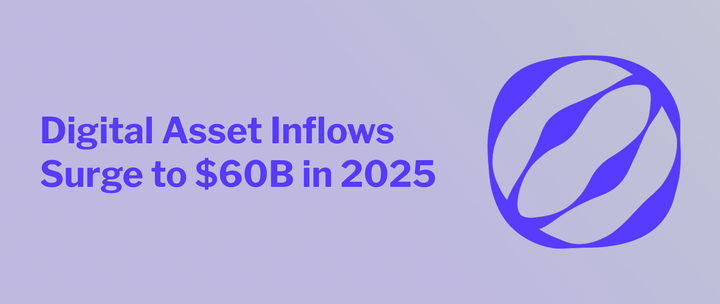The Potential Approval of Cryptocurrencies as Commodities in America and Its Impact on Altcoins
Introduction
The regulatory landscape for cryptocurrencies in the United States has been a topic of intense debate and speculation for over a decade. As cryptocurrencies like Bitcoin, Ethereum, and a myriad of altcoins gain mainstream traction, the question of how they should be classified securities or commodities has taken center stage. Recent legislative efforts, particularly in 2025, suggest a potential shift toward classifying certain cryptocurrencies as commodities under the jurisdiction of the Commodity Futures Trading Commission (CFTC), rather than securities under the Securities and Exchange Commission (SEC). This article explores the implications of such a classification, with a focus on its potential impact on altcoins cryptocurrencies other than Bitcoin. By examining the regulatory context, legislative developments, and market dynamics, we aim to provide a comprehensive analysis of how this shift could reshape the altcoin ecosystem.
The Regulatory Debate: Securities vs. Commodities
Historical Context
Since Bitcoin’s inception in 2008, cryptocurrencies have operated in a regulatory gray area in the United States. The SEC, under former Chair Gary Gensler, took a hardline stance, asserting that most cryptocurrencies are securities under the Howey Test, which defines a security as an investment contract involving an expectation of profits from the efforts of others. This approach led to numerous enforcement actions against crypto exchanges like Coinbase, Binance, and Kraken for allegedly offering unregistered securities.
In contrast, the CFTC has treated Bitcoin and Ethereum as commodities, a position reinforced by court rulings and the agency’s oversight of crypto derivatives markets, such as Bitcoin futures. The CFTC’s jurisdiction over commodities, as defined by the Commodity Exchange Act (CEA), includes tangible goods and certain intangible assets traded in futures markets. The classification of cryptocurrencies as commodities would shift primary oversight from the SEC to the CFTC, potentially reducing regulatory friction for crypto companies.
Legislative Momentum in 2025
The year 2025 has marked a pivotal moment for cryptocurrency regulation in the U.S. Several bills introduced in Congress aim to clarify the regulatory framework for digital assets, with a focus on distinguishing between securities and commodities. Key legislative proposals include:
- The Financial Innovation and Technology for the 21st Century Act (FIT21): Passed by the House of Representatives in 2024, FIT21 proposes that digital assets on decentralized blockchains be classified as commodities under CFTC jurisdiction, while those on centralized platforms remain securities under the SEC.
- The CLARITY Act: This bill, debated in the House in July 2025, aims to define Bitcoin, Ethereum, and other large-cap altcoins as commodities, transferring oversight to the CFTC. It also establishes rules for custody, market structure, and consumer protection.
- The Digital Commodities Consumer Protection Act (DCCPA): Introduced in 2022 and revisited in 2025, this bill grants the CFTC exclusive jurisdiction over “digital commodity” trading, except for transactions involving goods or services.
- The GENIUS Act: Signed into law in 2025, this act creates a federal framework for stablecoins, setting a precedent for commodity-like treatment of certain crypto assets.
These legislative efforts reflect a broader shift toward a pro-crypto stance, particularly under the Trump administration, which has expressed support for digital assets. President Trump’s appointment of Paul Atkins as SEC Chair and Brian Quintenz as CFTC Chair signals a lighter regulatory touch, with both individuals known for their pro-crypto views.
Why Commodities Classification Matters
Classifying cryptocurrencies as commodities has significant implications for the industry. Unlike securities, commodities are subject to less stringent disclosure requirements and are primarily regulated through futures and derivatives markets. This shift could:
- Reduce Regulatory Uncertainty: A clear commodity classification would provide crypto companies with predictable rules, reducing the risk of SEC enforcement actions.
- Enhance Institutional Adoption: Institutional investors, wary of regulatory risks, may be more inclined to invest in altcoins classified as commodities, as they align with existing commodity trading frameworks.
- Facilitate Spot ETF Approvals: The approval of Bitcoin spot ETFs in January 2024 demonstrated the market’s appetite for regulated crypto investment vehicles. A commodity classification could pave the way for altcoin ETFs, boosting liquidity and investor access.
- Promote Market Innovation: By reducing SEC oversight, which has been criticized for stifling innovation, a CFTC-led framework could encourage the development of new altcoin projects and decentralized finance (DeFi) protocols.
The Altcoin Ecosystem: Opportunities and Challenges
Altcoins, encompassing thousands of cryptocurrencies beyond Bitcoin, range from Ethereum and Solana to meme coins like XYZVerse and niche tokens like Alephium (ALPH). Their diversity makes them particularly sensitive to regulatory changes. Below, we explore how a commodities classification could impact altcoins across various dimensions.
Market Dynamics and Investor Sentiment
The cryptocurrency market has experienced significant volatility in 2025, with Bitcoin reaching an all-time high of $108,786 in January before declining in Q1. Altcoins, however, have faced steeper losses, with some resetting to April 2024 price levels. A commodity classification could alter this trajectory by:
- Boosting Investor Confidence: Clear regulations could attract institutional capital sidelined by regulatory uncertainty, potentially driving price appreciation for altcoins like XRP, Solana, and Cardano, which have shown resilience.
- Reducing Bitcoin Dominance: Bitcoin currently commands over 50% of the crypto market cap, often at the expense of altcoins. A commodity framework could level the playing field, allowing altcoins to capture more market share.
- Encouraging Speculative Investment: Altcoins, particularly meme coins and emerging tokens, thrive in bullish markets. A pro-crypto regulatory environment could fuel speculative trading, as seen with XYZVerse’s projected 16,000% growth potential by mid-2025.
Spot ETF Approvals for Altcoins
The SEC’s approval of a Nasdaq Crypto Settlement Price Index for Solana (SOL), Cardano (ADA), Stellar (XLM), and XRP in June 2025 signals growing regulatory recognition of altcoin liquidity and price reliability. A commodity classification could accelerate the approval of spot ETFs for these altcoins, mirroring the success of Bitcoin ETFs. For example:
- XRP: With a 375.86% price increase over the past six months, XRP is well-positioned for ETF approval, potentially driving its price toward $3.32 if it breaks the $2.81 resistance level.
- Solana: Known for its high-throughput blockchain, Solana’s inclusion in the Nasdaq index suggests strong institutional interest, which could be amplified by commodity status.
- Cardano and Stellar: These altcoins, focused on scalability and cross-border payments, respectively, could benefit from ETF-driven capital inflows, enhancing their adoption.
Spot ETFs would provide retail and institutional investors with a regulated, accessible way to gain exposure to altcoins without managing private wallets, potentially unlocking billions in new capital.
Impact on DeFi and Utility Tokens
Decentralized finance (DeFi) protocols, built on altcoins like Ethereum, Polygon, and Optimism, rely on utility tokens to facilitate transactions and governance. A commodity classification could:
- Reduce SEC Scrutiny: Many DeFi tokens have faced SEC lawsuits for being unregistered securities. CFTC oversight, focused on fraudтика: fraud prevention and market manipulation, could allow DeFi projects to operate with less regulatory risk.
- Foster Innovation: With fewer regulatory hurdles, DeFi projects could accelerate development, particularly for tokens like Uniswap (UNI) and Aave (AAVE), which power decentralized exchanges and lending platforms.
- Enhance Stablecoin Adoption: Stablecoins like Tether (USDT), often used in DeFi, could benefit from the GENIUS Act’s regulatory framework, encouraging their integration into traditional finance.
However, DeFi protocols must navigate CFTC regulations, such as anti-money laundering (AML) and know-your-customer (KYC) requirements, which could increase compliance costs.
Emerging Altcoins and Niche Projects
Emerging altcoins, such as Alephium (ALPH), Aptos (APT), and Celestia (TIA), are driving innovation in blockchain scalability, Web3, and AI integration. A commodity classification could:
- Attract Investment: These projects, often overlooked due to regulatory uncertainty, could gain traction as institutional investors seek diversified crypto portfolios.
- Enable Scalability: Reduced SEC oversight could lower barriers to entry for new projects, fostering competition and innovation in niche sectors like cloud computing (e.g., OctaSpace) and AI (e.g., ThoughtAI).
- Support Meme Coins: Community-driven tokens like XYZVerse, which combines sports and meme culture, could see speculative surges in a bullish regulatory environment.
Challenges and Risks
Despite the potential benefits, a commodity classification does not eliminate all risks for altcoins:
- Market Volatility: Altcoins are inherently volatile, and regulatory clarity may not prevent speculative bubbles or crashes, as seen in Q1 2025.
- Regulatory Gaps: The CFTC’s limited authority over spot markets could leave gaps in consumer protection, potentially exposing investors to fraud or market manipulation.
- Global Disparities: While the U.S. moves toward commodity classification, other countries may adopt stricter regulations, creating challenges for cross-border altcoin projects.
Economic and Social Implications
Economic Impacts
A commodity classification could have broader economic implications:
- Capital Inflows: Institutional investment in altcoins could stimulate economic activity in the blockchain sector, creating jobs in development, cybersecurity, and compliance.
- Global Competitiveness: By fostering a crypto-friendly environment, the U.S. could attract blockchain companies from jurisdictions with harsher regulations, strengthening its position in the global digital economy.
- Macroeconomic Stability: The IMF has warned that crypto assets could trigger capital outflows in emerging economies, potentially destabilizing local currencies. U.S. regulatory clarity could influence global standards, mitigating these risks.
Social and Psychological Factors
Cryptocurrency ownership is associated with a unique profile of political, psychological, and social characteristics. A 2022 survey of 2,001 American adults found that crypto investors tend to be risk-tolerant, distrustful of traditional financial institutions, and motivated by the potential for quick gains. A commodity classification could broaden the appeal of altcoins, attracting a more diverse investor base and potentially reshaping societal attitudes toward decentralized finance.
Case Studies: Altcoins in Focus
XRP
XRP, developed by Ripple Labs, has been a focal point of regulatory disputes, with the SEC alleging it is an unregistered security. A commodity classification could resolve this uncertainty, potentially:
- Driving Price Growth: XRP’s recent 375.86% surge suggests strong market resilience, and ETF approval could push its price toward $3.32 or higher.
- Enhancing Use Cases: XRP’s focus on cross-border payments could gain traction with banks and financial institutions, especially under a CFTC framework that emphasizes AML compliance.
Solana
Solana’s high-throughput blockchain has made it a favorite for DeFi and NFT applications. Commodity status could:
- Boost Institutional Adoption: Solana’s inclusion in the Nasdaq Crypto Index indicates robust liquidity, making it a prime candidate for spot ETFs.
- Support Scalability: Reduced regulatory hurdles could accelerate Solana’s partnerships with Web3 and gaming projects, driving adoption.
XYZVerse
As a meme coin with a sports-focused community, XYZVerse represents the speculative side of altcoins. A commodity classification could:
- Fuel Speculative Growth: Analysts predict up to 16,000% gains by mid-2025, driven by community governance and token burn strategies.
- Increase Volatility: Meme coins are prone to rapid price swings, and regulatory clarity may amplify speculative trading.
Global Context and Future Outlook
International Reactions
The U.S.’s potential shift to commodity classification could set a precedent for other countries. The European Union’s Markets in Crypto-Assets Regulation (MiCA), effective from 2023, provides a comprehensive framework for crypto regulation, and U.S. alignment could foster global harmonization. However, some countries, like China, are pursuing CBDCs and stricter crypto bans, which could create a fragmented global market.
Long-Term Prospects
Looking ahead, the commodity classification could:
- Accelerate Mainstream Adoption: By integrating altcoins into traditional financial systems, the U.S. could lead the global transition to decentralized finance.
- Drive Technological Innovation: Reduced regulatory barriers could spur advancements in blockchain scalability, privacy, and interoperability, benefiting altcoins like Aptos and Celestia.
- Mitigate Risks: Robust CFTC regulations could address fraud and market manipulation, enhancing investor trust in altcoins.
Conclusion
The potential approval of cryptocurrencies as commodities in the United States represents a transformative moment for the altcoin ecosystem. By shifting oversight to the CFTC, this regulatory change could reduce uncertainty, attract institutional capital, and foster innovation across DeFi, utility tokens, and emerging altcoins. While challenges like market volatility and global disparities remain, the benefits of clarity, such as spot ETF approvals, increased adoption, and economic growth could propel altcoins into the mainstream. As the U.S. navigates this regulatory evolution, the global crypto market watches closely, anticipating a new era of opportunity and stability for altcoins.



Comments ()